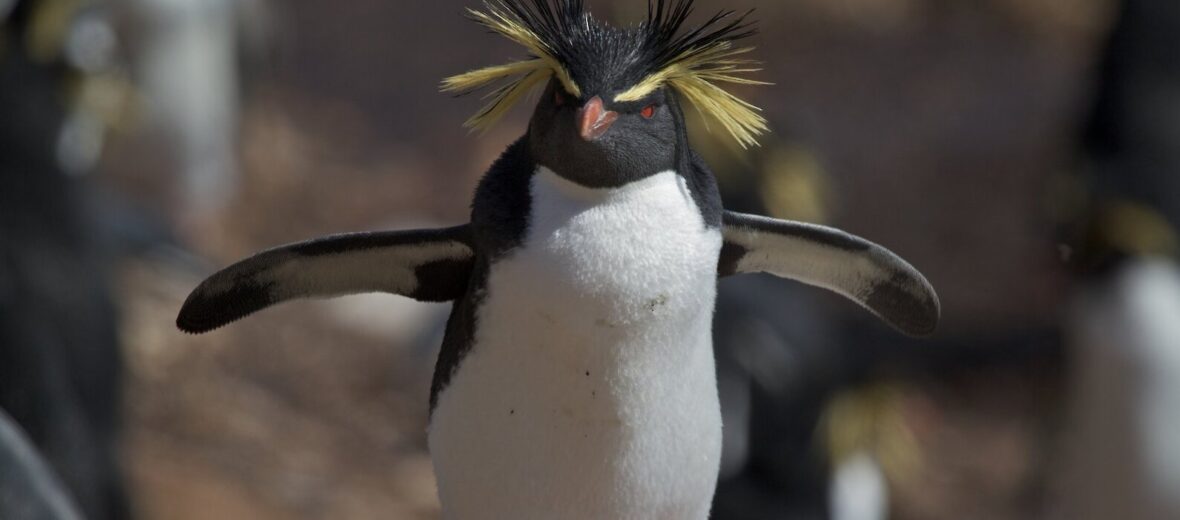
The northern rockhopper penguin, aka Moseley’s Penguin, can be found, breeding, on various islands in the South Atlantic and Indian Oceans. They spend the rest of their time at sea. On land, they prefer marine neritic zones, marine oceanic zones, marine intertidal zones, grasslands, and rocky areas. Globally, there are approximately 480,600 northern rockhopper pairs. Due to climate change, invasive species, hunting/trapping, and pollution these birds are listed as Endangered by the IUCN. There numbers are also decreasing.
First the Stats…
Scientific name: Eudyptes moseleyi
Weight: Up to 6.6 lbs.
Length: Up to 22 inches
Lifespan: Up to 10 years
Now on to the Facts!
1.) Rockhoppers eat fish, squid, and krill.
2.) While at sea, they are preyed on by leopard seals, fur seals, orcas, and blue sharks. On land, the chicks and eggs are preyed on by skuas, giant petrels, sheathbills, and various gulls.
3.) Every penguin specimen that is collected with a permit must be reported to and approved by the Scientific Committee for Antarctic Research (SCAR).
4.) They can dive up to 300 feet and can stay underwater for several minutes before needing to surface.
5.) Unlike most other social penguins, rockhoppers tend to be very aggressive towards each other. They will slap each other with their flippers, jab at one another with open beaks, and even shove one another from their rocky perches.
But wait, there’s more on the northern rockhopper penguin!
6.) Just like other penguins, rockhoppers have the ability to alter the shape of the lenses in their eyes, providing them good vision both above and below the water.
7.) The northern rockhopper penguins can form breeding colonies of over 100,000 strong!
Did you know…?
Even though the female will lay 2 eggs, the first egg is smaller than the second. Subsequently, the first egg will be ejected from the nest, allowing the second to develop.
8.) Besides fighting, they also communicate via bowing, preening, and shaking their heads.
9.) Rockhoppers can swim up to 4.3 mph. On land, they mostly hop or sometimes opt to slide along the ice on their bellies. This is called tobogganing.
10.) Rockhopper penguins are not monogamous (mate for life). Penguins actually mate for several seasons and then move on to find a new partner. This helps to ensure a solid genetic pool.
Now a Short Northern Rockhopper Penguin Video!
Also, check out the Critter Science YouTube channel. Videos added frequently!
Want to suggest a critter for me to write about? Let me know here.



